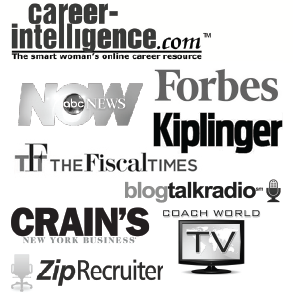
Sep 11, 2015 | coaching, Gen Y, personal development
It was gratifying to see Forbes magazine publish an article last month redefining the highly stigmatized liberal arts degree. Nearly three years ago, I was asked to kick off a three day Career Lab event at Brown University. In true liberal arts fashion, I was given free reign on my presentation and so I created “Leveraging your Liberal Arts Degree…for Competitive Advantage,” a talk designed to instill in the students the confidence that their liberal arts skills are absolutely marketable in a business world that continues its shift from knowledge-based to conceptual. “Back then” — as now — employers were hiring but having a difficult time finding qualified candidates. I agree with Anders’ enthusiastic celebration of all that liberal arts candidates bring to potential employers, not only in the tech world, but beyond. As I stated in early 2013, a “liberal arts curriculum gives you more than ‘just’ a well rounded, integrated education. It develops your critical thinking skills, exactly what employers are looking for today.” It’s true that employers are looking for more than just know-how — they need employees who think critically and can apply what they know to constantly changing situations. Today’s fast-paced marketplace demands far more than technical skills and job-specific knowledge. As with Big Data, it’s less important what you know that what you do with the knowledge. The required (and desired) list of employee attributes I detailed for those 2013 graduates three years ago hasn’t changed…BUT THE NEED HAS GROWN. The only things that have changed since then are the demand for such attributes (it’s greater) and the increasing recognition of how liberal arts degrees...

Mar 19, 2015 | coaching, critical thinking, gender roles in business, leadership, personal development, women
Earlier this month, I read an article entitled, “Breaking the Glass Ceiling by Ignoring It.” It was a fabulous title and a decent article, but it left a lot still left unsaid. You can read it for yourself here Following are my comments on the topic of “Ignoring The Glass Ceiling”: The numbers are clear about the dearth of women in top leadership spots and the discussion on this can get quite complex from a policy point of view (e.g. to quota or not to quota) but what’s also clear is that there’s much women can do ON THEIR OWN to improve career progression and management. The problem with interviewing women who have ‘made it’ is that they’ve often been impervious to the metaphoric slings and arrows that side-track many many more women who don’t have the same innate resilience. (I prefer resilience to toughness, as resilience allows women to endure without impact while also retaining the ‘soft’ skills that make us so perfect for leadership in a complex global 21st Century marketplace.) So, for the majority of women, it’s true we don’t ask, have difficulty being heard, struggle with being recognized and in the end, haven’t deliberately gone about the essential practice of building influence. In response, I’ve created a program called “Picking Up Where ‘Lean In’ Leaves Off,” designed to help the atrophying pipeline of women to equip themselves for ANY obstacle, glass ceiling, sticky floor, whatever. I do this by focusing on 3 tentpole skills essential for career success: 1. Effective communication (replete with how to avoid ‘girl traps’ that make us less than effective – or respected – communicators) 2. Developing...

Jan 28, 2015 | coaching, confidence, critical thinking, gender roles in business, leadership, personal development, women
Recently, I received a thank you note from an executive in response to the professional development series she invited me to deliver to women in her industry. The note excitedly championed the “dtkMindset” I imparted to the group — a dtkSignature and a perfect term which I thank her for coining. What did she mean by the “dtkMindSet,” especially as it pertains to professional women? In a nutshell, it’s decidedly NOT a palliative fix, road map, template or formula — there are plenty of those around for the undiscriminating consumer — but rather it’s a way of thinking that deploys the power of and desirability of women’s innate brain wiring. ‘Getting’ the MindSet was already exciting but what was exciting to me was witnessing participants’ making the leap from MindSet to MindShift. And it’s that shift in women’s thinking that is so critical to improving women’s professional experience as well as their progress. The fact is the number of women in leadership positions — 17% — is dismal and the needle has been stuck there since I started tracking this in 2005. Between 2005 and 2015, smart people have tried to crack this but the problem is that sadly, their institutional or male-reliant remedies only address the externalities. Instead, it’s the shifting to a dtkMindset that’s critical especially for professional women interested in advancing through the ranks and into leadership positions. In addition to women’s more actively managing their own careers, the dtkMindset shows women that it’s the inside-out work that will ultimately make the difference. Women and confidence Confidence is a recurrent theme with women and with those...

Jun 6, 2014 | coaching, confidence, critical thinking, gender roles in business, leadership, women
Lots of recent discussion about what I’ve long referred to as the confidence conundrum — how much is enough, how much is too much, how do we get it, why does he/she have it and I don’t— particularly as it pertains to women in leadership. While this is certainly not a new topic, two national journalists have written a book hoping to “crack” the “confidence code”…once and for all. See an overview here: Journalists Kay and Shipman urge women to close the confidence gap. Not that simple. Despite ongoing efforts to capture it, achieving a state of balanced confidence continues to elude even the smartest and most successful. Which is why hot and cold running trainers and coaches have created a self-perpetuating industry of quick fix offerings that a) capitalize on fear and b) never get at the more fundamental issues, the true drivers of authentic and sustainable confidence. In fact, their approach is merely palliative and therefore short-lived: they drill women on using bolder verbiage, on deploying more assertive body language, on acting ‘as if;’ indeed, all are legitimate interventions and confidence boosters** but are also wholly insufficient. The problem and why it persists, I submit, is that we’ve been thinking and going about this all wrong. In 2013, I was asked to address the East Tennessee Women’s Leadership Summit on this very topic and had the distinct privilege of shaking up the status quo with an original and innovative paradigm: basically, confidence isn’t a commodity to be bought, sold, borrowed, loaned or lusted after and there simply is no code to break. Instead, it’s a constellation of...

May 14, 2014 | coaching, critical thinking, networking, Uncategorized
I’m often asked to train leaders, board members, and teams on the topic of personal branding and networking, subjects I’m happy to simplify for my clients. However, in order to make an impact in this particular arena of professional development, I must first reveal a sometimes unwelcome truth: The art of creating a personal brand and building sphere of influence offers no legitimate short cuts. Even considering the speed at which business moves today, incremental and deliberate is still the way to go when developing a compelling brand and a powerful network. A strong personal brand isn’t something academic or hypothetical you fabricate in a closed room with your resume, a notebook and personal coach. It’s built over time, from the inside-out, and is the culmination of how you choose to conduct yourself in the boardroom, in client meetings, and when representing the firm at your industry meetings. And it’s the strong, authentic personal brand lived consistently that is the key to building a meaningful and influential network. Of course, there will always be those who promote the quick, far and wide method of building your network, amassing names of “contacts” and reducing your personal brand to a 30 second elevator pitch. But this does little to foster deep connections and a curated network, the stuff of influence. And, because influence is the currency of business, I’ll continue to bypass the shortcut in favor of the longer but more scenic...

Apr 10, 2014 | coaching, critical thinking, leadership
Mentoring — while a popular buzz word in the halls of corporate America today — is actually a very old concept, referring to a teaching technique previously reserved for the few and the special. However, in response to the fast pace, intense competition and complexities of business, mentors and proteges alike, have significantly diluted the mentoring process into something that lacks the power, impact and effect it once implied. To reinvigorate your own mentoring program, and plan for its possibilities and limits, it’s critical that you approach the process through a different lens. Let’s start with a basic definition. Building an impactful mentoring program or being an effective mentor is a delicate dance, more complex than the standard, yet unofficial definition of the term, making mentorship synonymous with brain-dumping information, fixing people, or making connections. While leaders are often fine with the teaching / advising function of mentoring, the true impact is made when the mentor adopts the Indo-European derivation of the word, meaning “to think.” The best, most enduring gift Mentors can give their proteges is to get them to think. Effective mentors teach, yes, but more importantly, they question and challenge their protoges to deploy the knowledge they’ve gained, see patterns, connect the dots, make inferences and solve problems. If you’re reading this and your own mentoring relationship or mentorship program appears to lack the power and results you initially imagined, remember that the best, most sustainable, and most applicable learning is experiential. Encourage your leaders in mentoring roles to: Ask more questions; – Avoid being overly prescriptive – Expect the protoge’s interest, commitment and energy to match...







 Dani Ticktin Koplik —
Leadership consultant, executive coach, change agent and passionate professional development expert and speaker. You can learn more about Dani and her clients by visiting dtkBio page.
Dani Ticktin Koplik —
Leadership consultant, executive coach, change agent and passionate professional development expert and speaker. You can learn more about Dani and her clients by visiting dtkBio page. 